1lumen selects and reviews products personally. We may earn affiliate commissions through our links, which help support our testing.
Acebeam X50 review
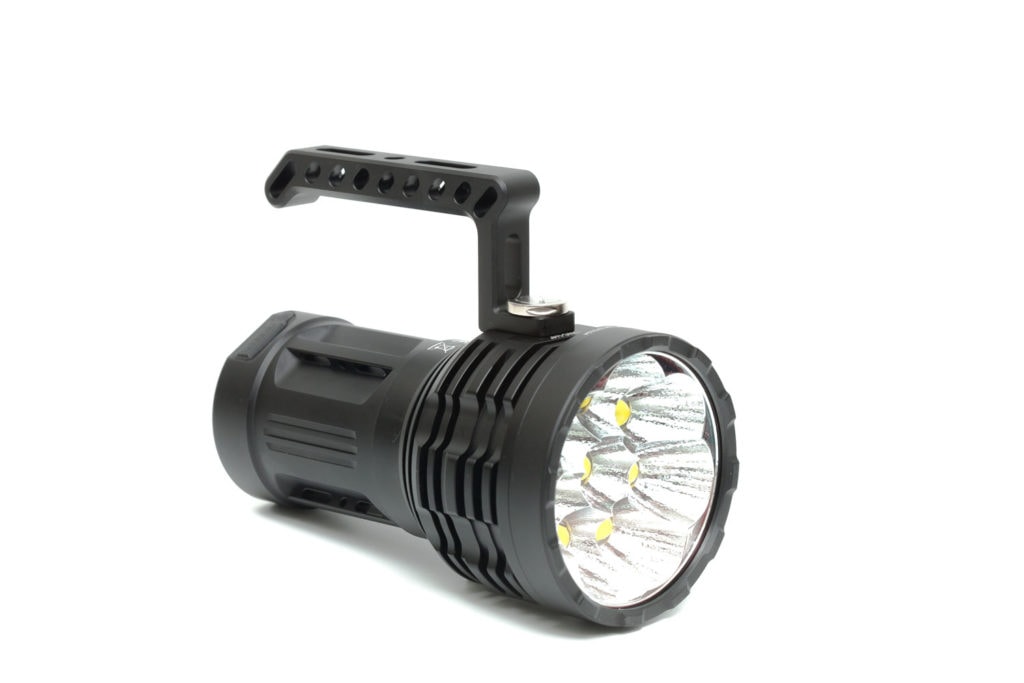
Acebeam X50 specifications
| Brand/model | Acebeam X50 |
|---|---|
| LED | 8*CREE XHP70.2 |
| Lumens | 38,000 lm (and 40,000 lm for 6500K) |
| Beam intensity | 140,625 cd (and 160,000 for 6500K) |
| Battery config. | Battery pack (10.8V/4250mAh) |
| Material | Aluminum |
| Modes | 7 |
| Blinkies | Strobe |
| Reflector | OP |
| Waterproof | IP66 |
| Review date | August 2021 |
Introduction:
Back in 2018, Acebeam had the most powerful flashlight on the planet.. although just briefly. This flashlight was the Acebeam X70, and was soon beaten by the Imalent MS18 as the most powerful (production) flashlight on the planet. Fast forward 3 years, and here we are, reviewing the Acebeam X50. A 40,000-lumen flashlight with 8*XHP70.2 LEDs.
This is the brightest mass-production flashlight sold in 2021.
The X50 fits right into the X-series lineup from Acebeam. It’s just a bit bigger than the X80-GT, but also a bit more powerful than the X80-GT. 32500 lumens vs 40,000 lumens. I still think they should have used the model names more consistent with the output. So a X30 for 30,000 lumens, X40 for 40,000 lumens etc. That way, it’s much easier to keep track. It almost looks like there is no clear explanation for the use of the specific model numbers.
Package quality.
Acebeam doesn’t disappoint when it comes to packaging. Although it’s not as interesting as the packaging that came with the earliest high-power flashlights, like the K40M. The earliest lights came in simple flight cases, that looked very nice, and could be used to carry the light.
Anyway, here’s the stuff you can find in the box:
- The Acebeam X50 flashlight
- (Battery pack)
- AC adapter with USB-C port
- USB-C to USB-C cable
- Holster
- Carry handle
- Lanyard
- Spare o-rings
- Warranty card
- Manual

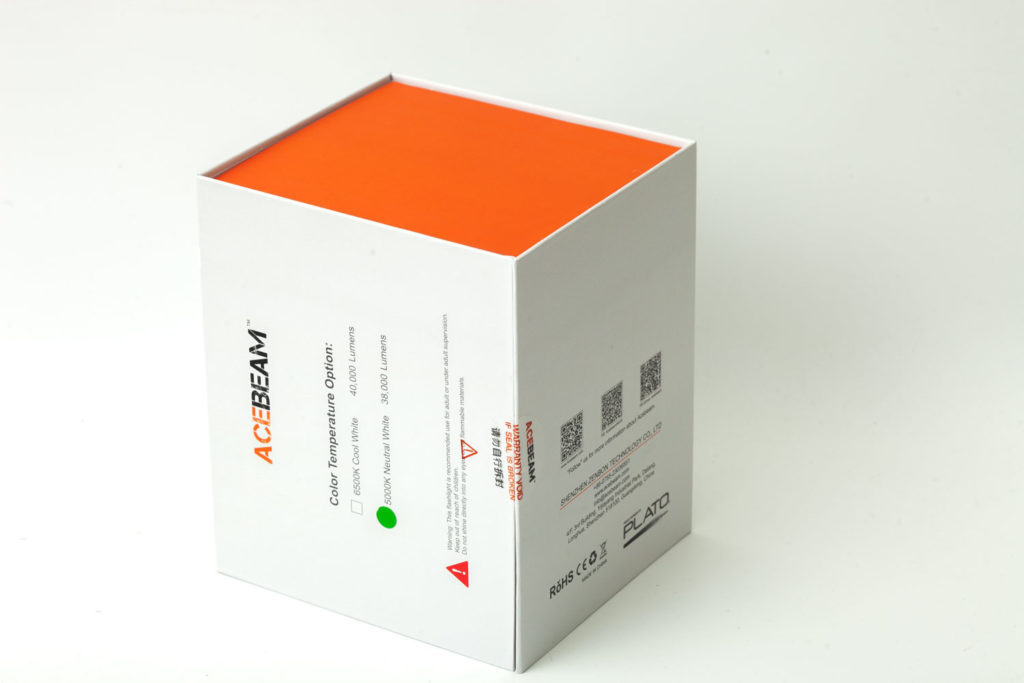
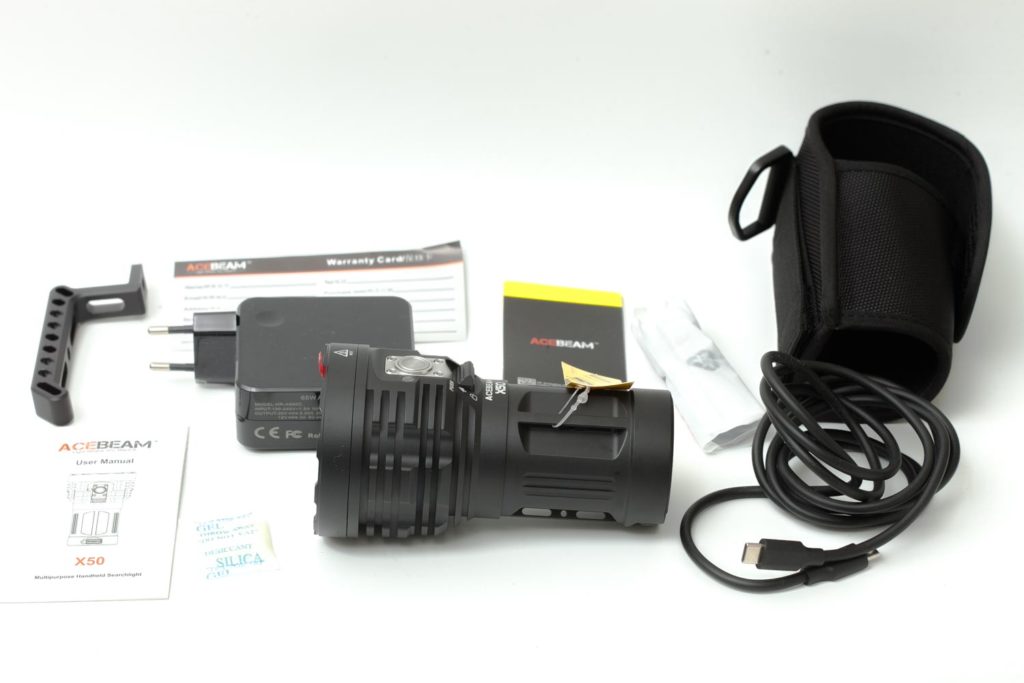
Flashlight in use
When it comes to these high-power flashlights, a handle isn’t something you should laugh at. The X50 gets dangerously hot, so I would suggest attaching the handle from day 1. Although the manual states it has an ‘intelligent overheat protection’, in reality, it doesn’t stop at 65 degrees. From my measurements with a thermal camera, the temperature rose to around 80 degrees.
And a flashlight that is 80-degrees isn’t something you’d like to hold, or even touch. Therefore, I’d advise using the handle as soon and as often as possible. Unless, of course, you use Moon mode…
The light consists of 2 main parts, and the switch is located on the head, just above the mechanical safe-lock switch. That means you can easily operate the X50 one-handedly. And the mechanical lock switch is great so you don’t accidentally activate the flashlight.
Besides the handle, the package also includes a holster and a lanyard. The lanyard can be attached to every side of the flashlight.
Being so stubby, the X50 has no trouble tail-standing.
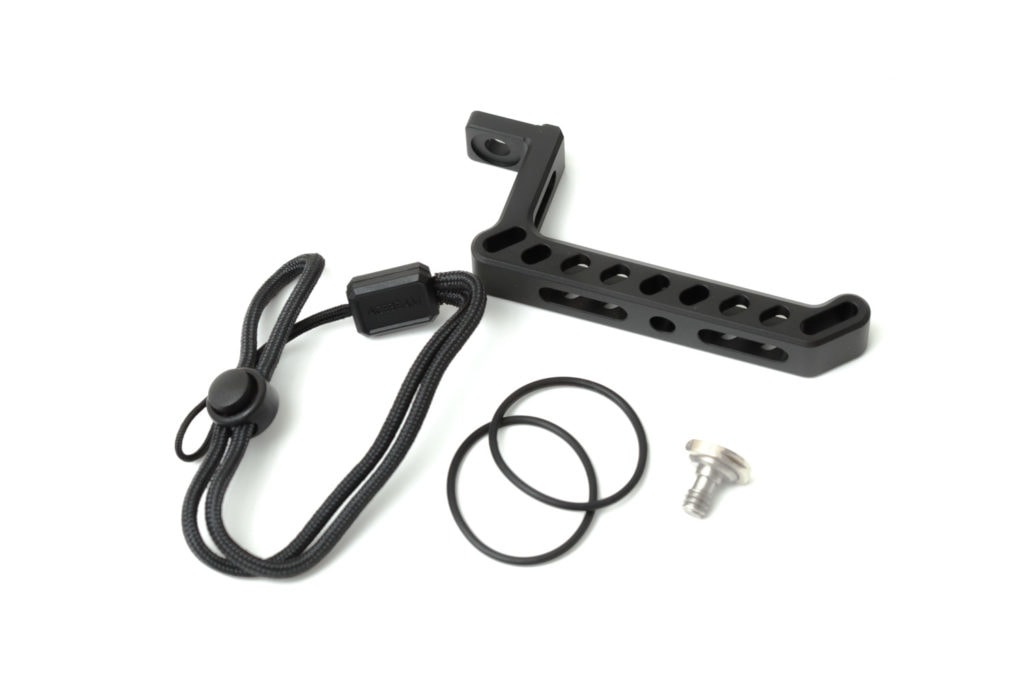
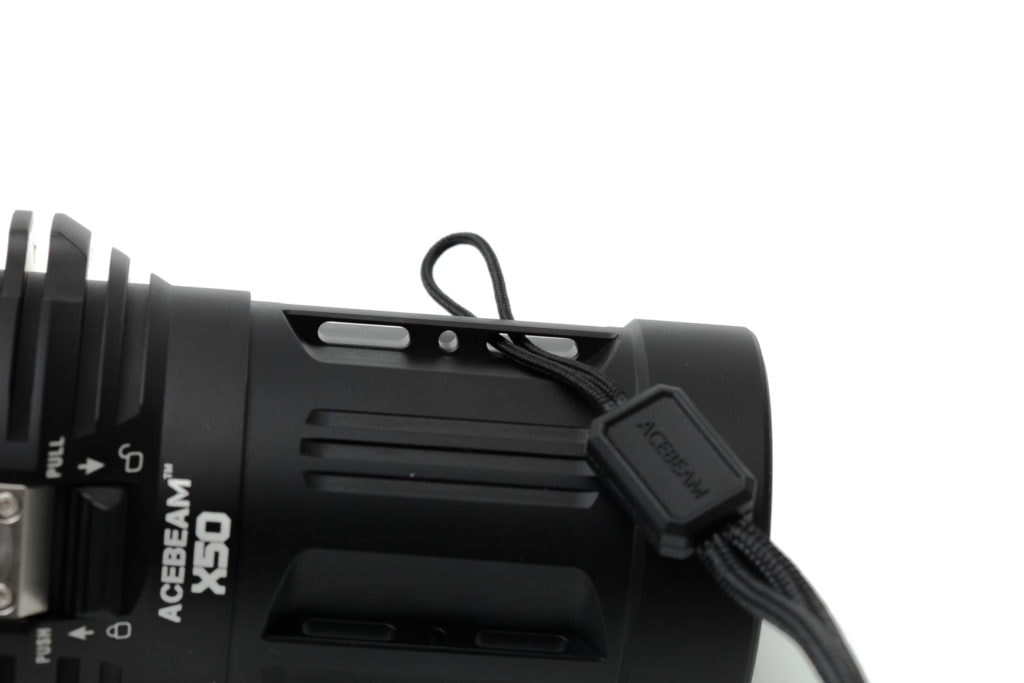
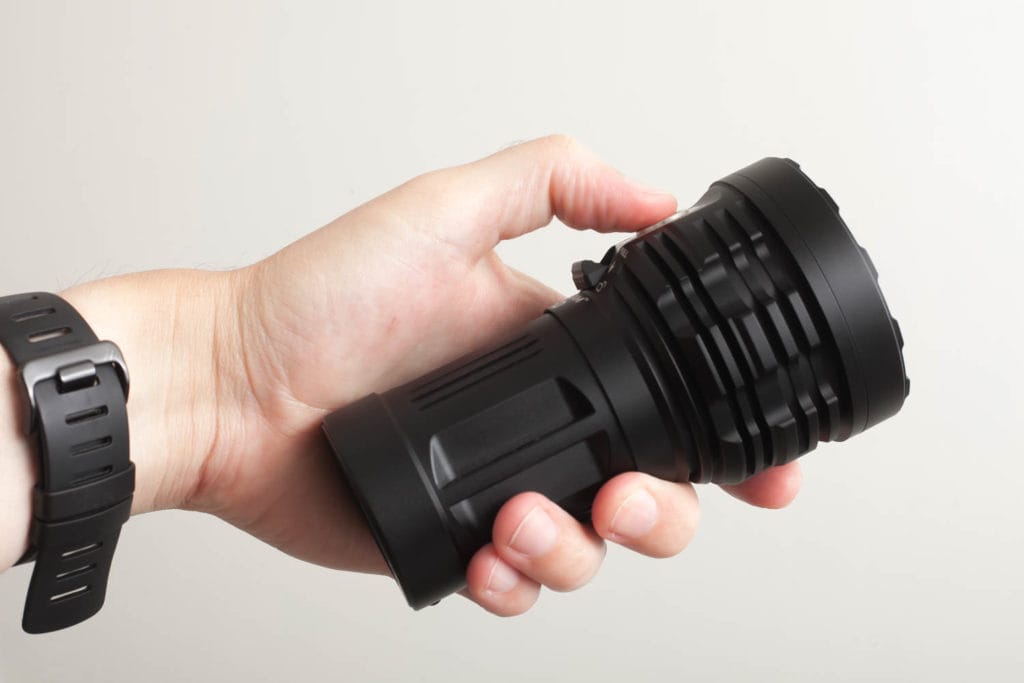
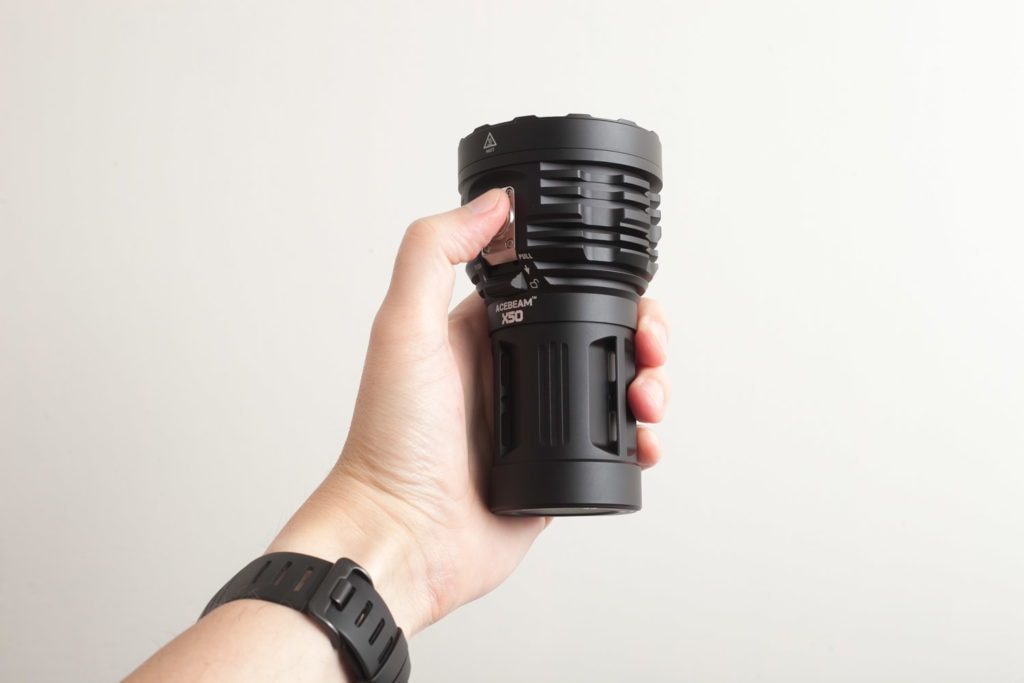
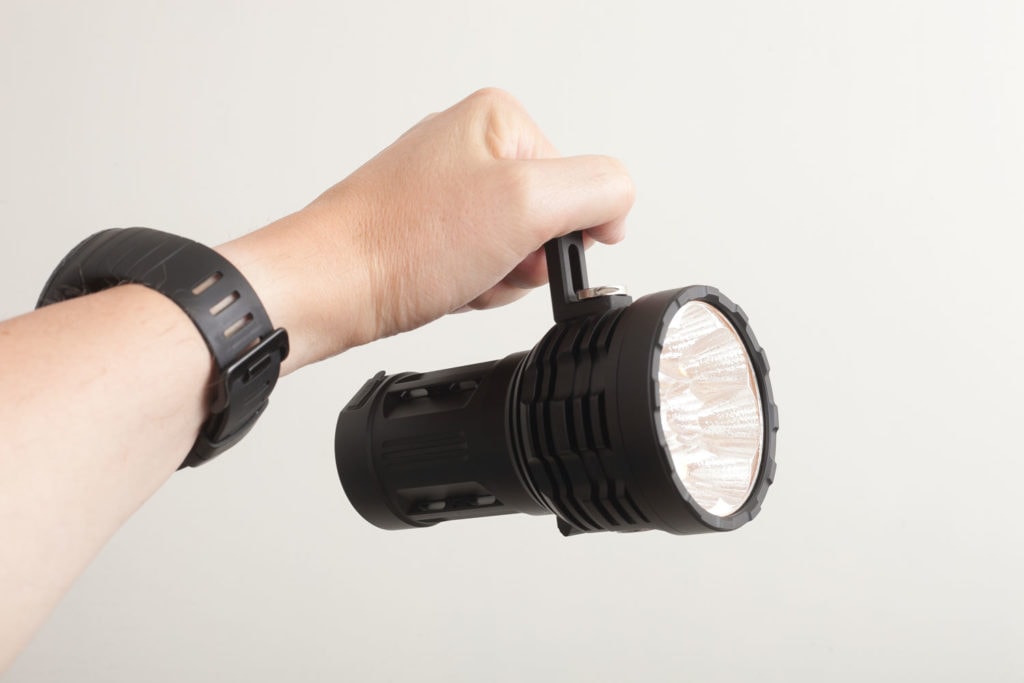
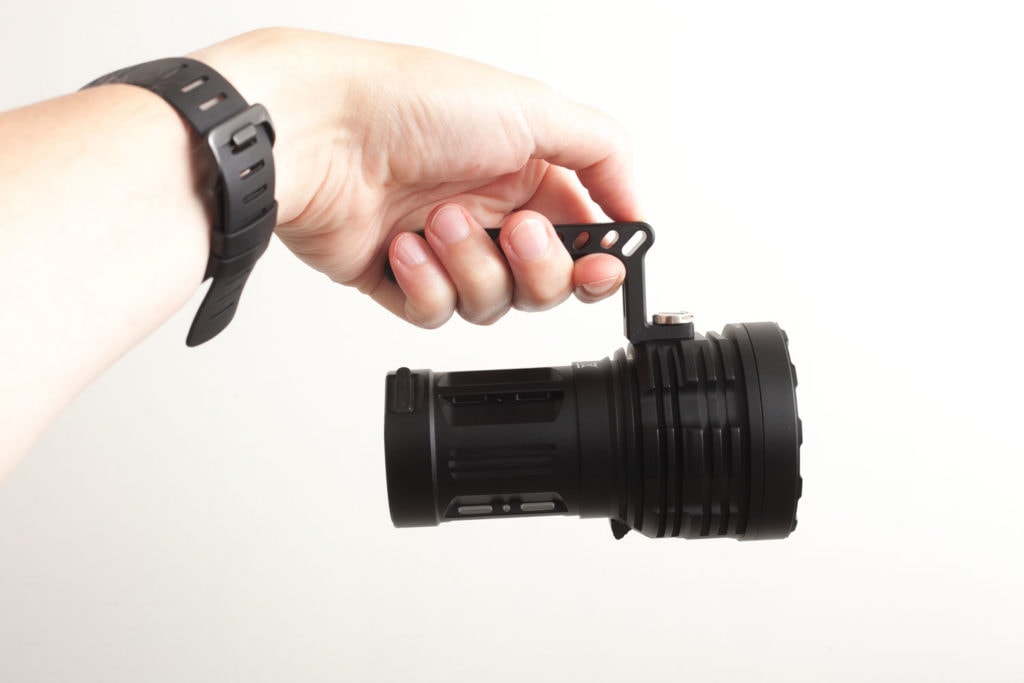
Build Quality, and Warranty
When it comes to build-quality, you definitely have to look at how all parts are machined and anodized. The X50 has a slightly matte finish that looks better than most shiny black flashlights.
The threads were well lubed, and need 6 full rotations to tighten. There’s only 1 o-ring to keep water from entering the flashlight near the threads.
Because of the amount of heat the X50 produces, I’d suggest attaching the handle ASAP, since it makes the light easier to carry, and it protects your fingers from getting burned. There’s a screw included that lets you attach the handle without the need for any tool or screwdriver. So even when you are on the go, and have no tools at hand, you can still attach and remove the handle without too much trouble.
The holster has velcro tape, and a loop, to attach it to your belt. I usually don’t use holsters, but it surely looks okay in terms of quality and durability. Only time will tell if these holsters are up for the job.
The following text was taken from Acebeam’s website concerning warranty:
1. If the customer experiences any problems with an Acebeam product within 15 days of purchase, the dealer will replace that product.
2. If an Acebeam flashlight fails during normal use within a period of five years (60 months) of purchase, the dealer will repair or replace the flashlight with the same or similar model.
3. Acebeam flashlights enjoy a limited lifetime warranty – after 60 months the dealer will attempt to repair the flashlight for the cost of spare parts and shipping (i.e. no charge for labor).
Please note:
A: This warranty applies to Acebeam flashlights, headlamps, bike lights, and camping lanterns, excluding lanterns with built-in batteries, purchased after 1 May 2016;
B: LEP Flashlights, Rechargeable batteries, battery chargers, bike mounts, filters, remote pressure switches, and lanterns with built-in batteries are warranted for a period of one year (12 months) from date of purchase;
C: Products purchased before 1 May 2016 and special offers may have different warranty terms;
D: The warranty does not cover damage or failure caused by:
– Rough usage or operation which does not comply with the user manual or product specifications;
– Battery leakage;
– Unauthorized disassembly, repair, or modification;
– Defects or damage caused by factors outside of Acebeam’s control.
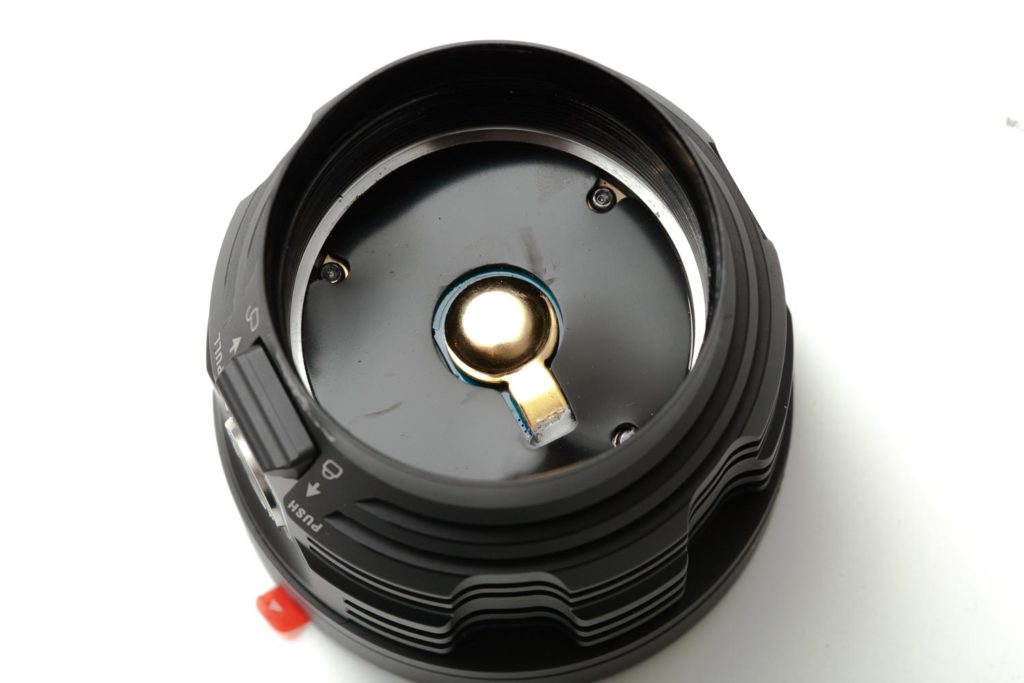
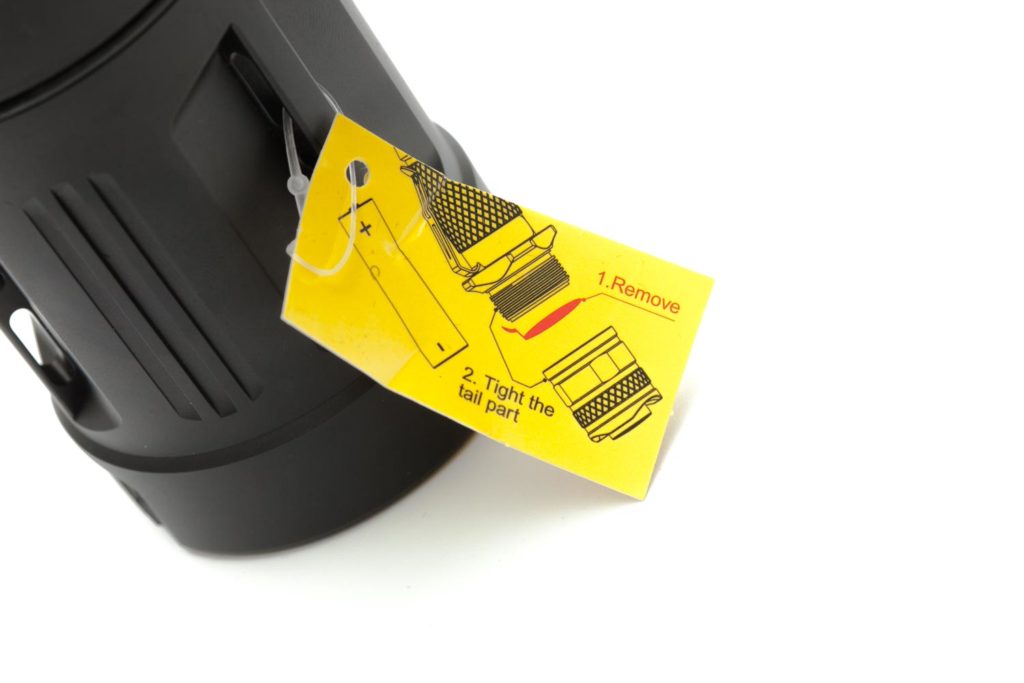
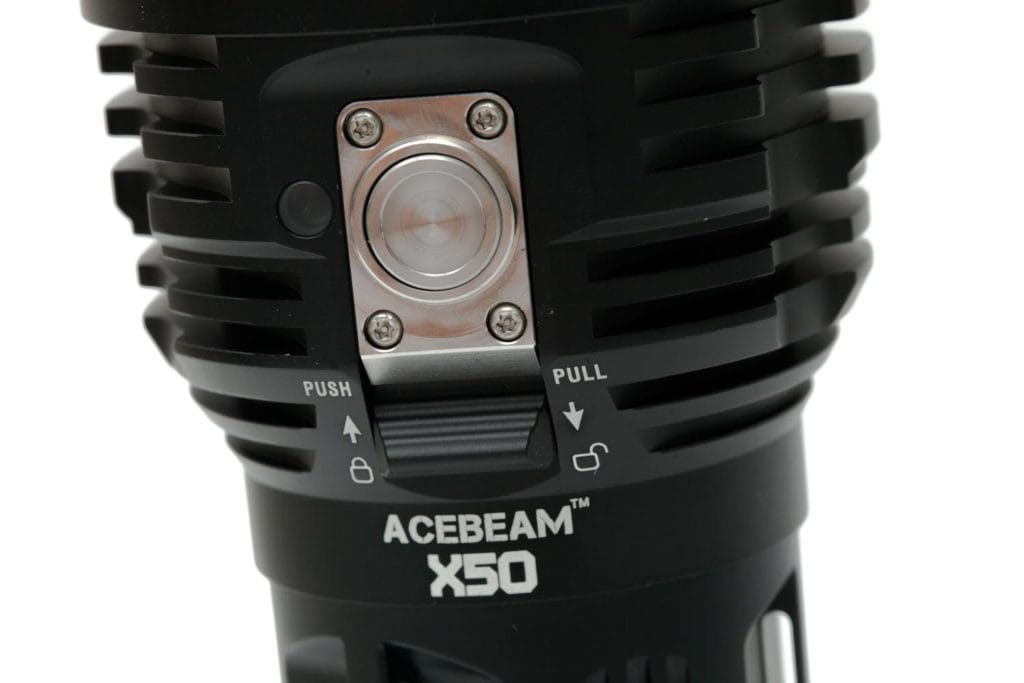
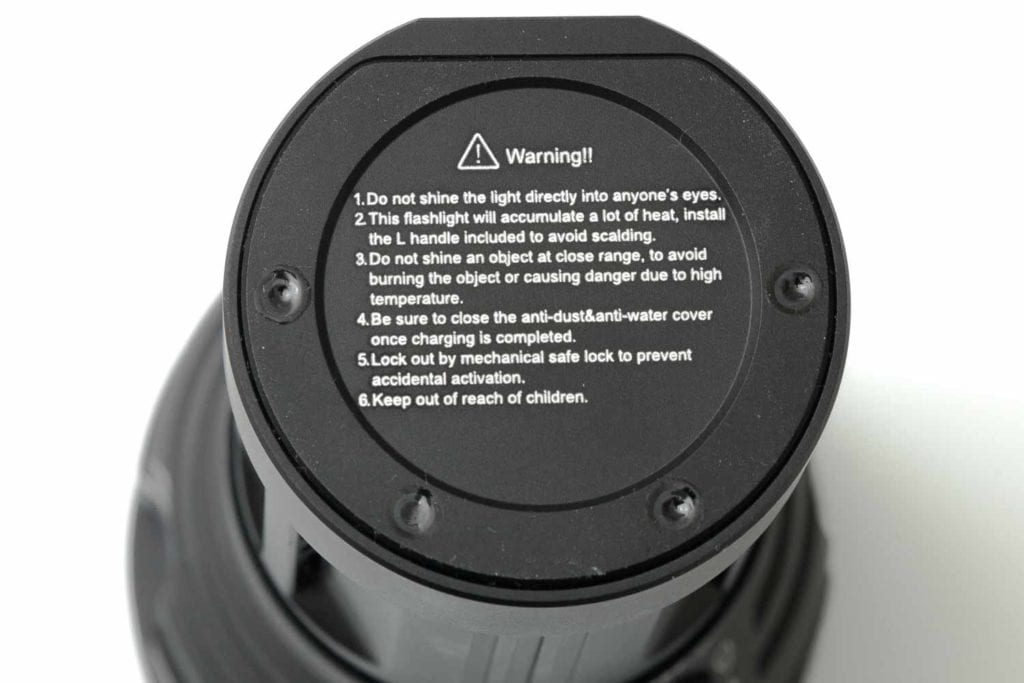
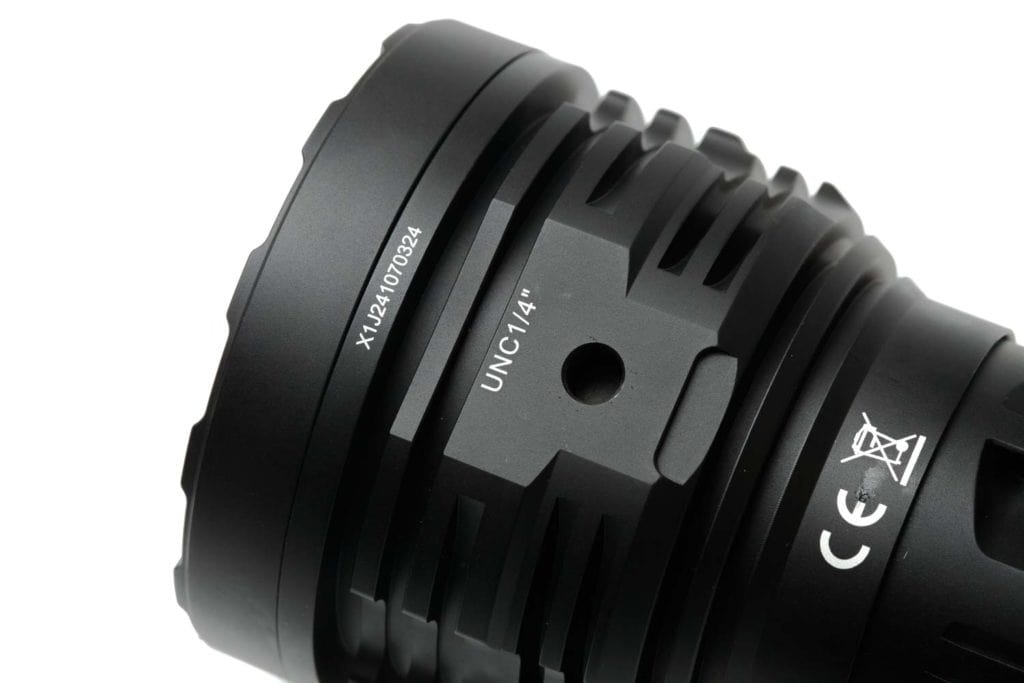
LED, Lens, Bezel, and Reflector
Ok, let’s talk about LEDs.
The older Acebeam X80-GT uses 18*XHP50.2 LEDs to bring you daylight during the night. But instead of using XHP50’s, Acebeam decided to use 8 pieces of CREE XHP70.2’s to get a maximum output of 40,000 lumens. They also give you the choice between 6500K and 5000K emitters. K stands for Kelvin, which relates to the ‘color temperature’ of the light. The lower the number the yellower the beam, and the higher the whiter/bluer the beam.
5000K is kind of in the middle of the spectrum and therefore called a Neutral white. And 6500K is on the cool side of the spectrum, toward blue, and therefore called Cold white or Cool white.
Please also keep in mind that 40,000 lumens is only achievable with the 6500K version while the 5000K version has a max output of 38,000 lumens. Btw. before I forget, the one I am reviewing is the 5000K (Neutral White) version.
8*XHP70.2 LEDs in shallow reflectors make the beam of the flashlight very wide. The deeper the reflectors the narrower the beam, and the shallower the reflectors, the wider the beam. In flashlight terminology, we talk about Flood (wide beam) and Throw (narrow beam). And according to the specs, the X50 has a beam angle of up to 120 degrees, which is extremely wide (very floody).
The other reason why the beam is so wide is the way the reflectors are made. The reflectors are not only shallow but have a LOP (light orange peel) coating to make the beam spread even more.
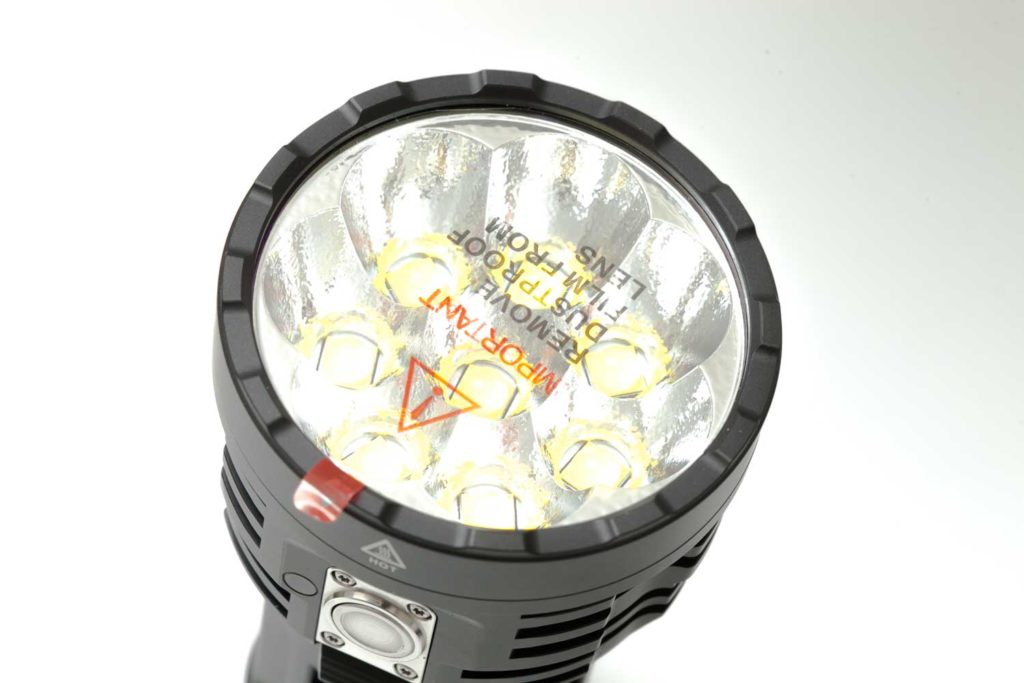
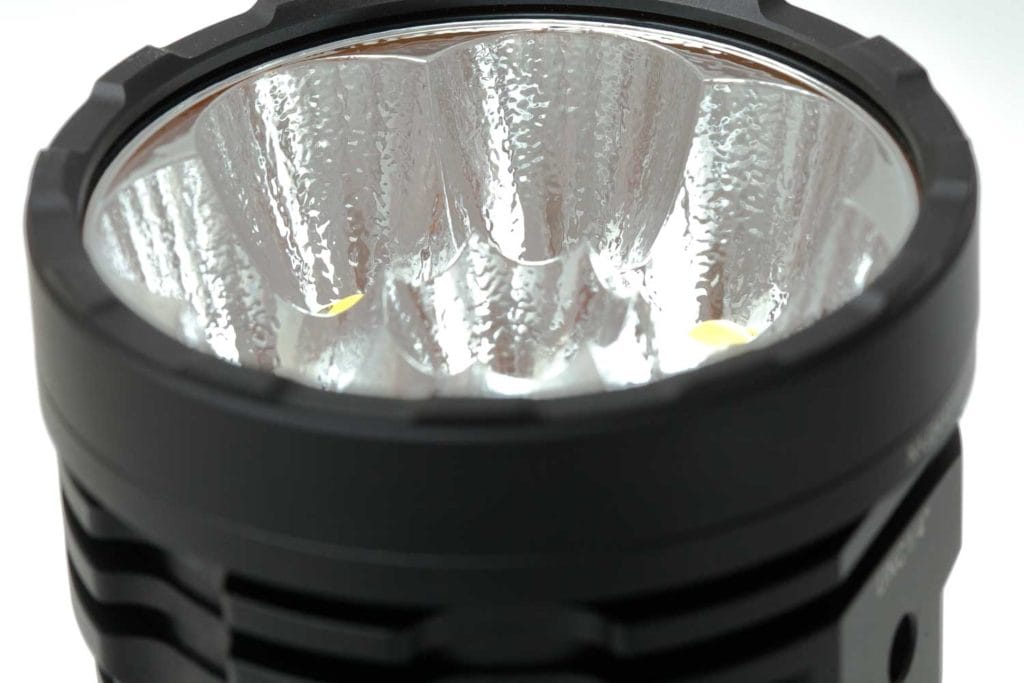
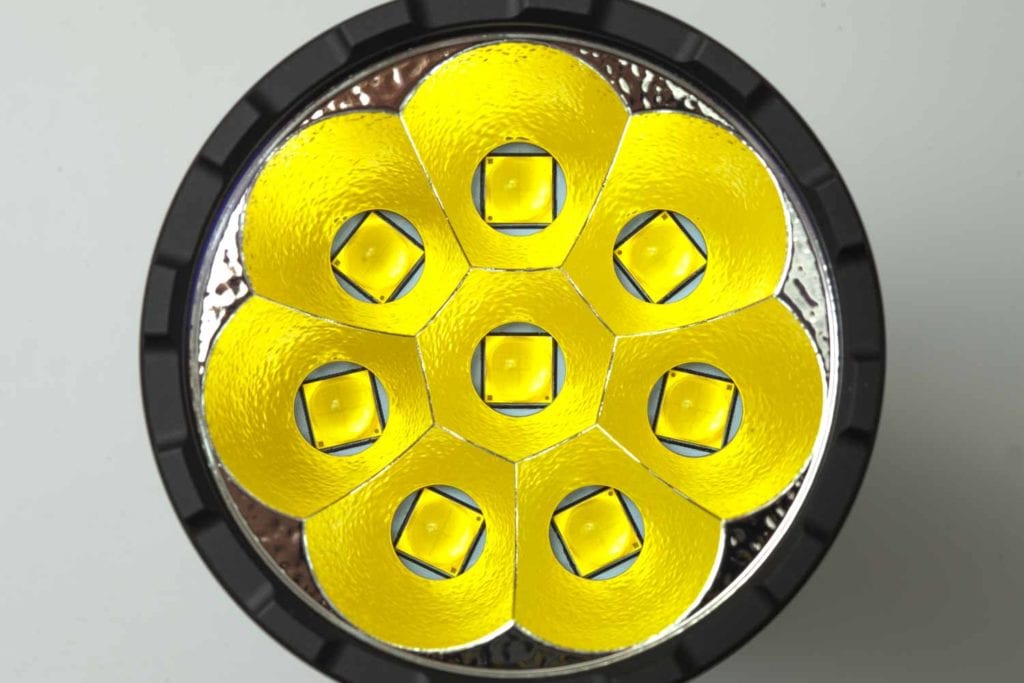
Dimensions and size comparison
- Length: 135 mm / 5.3 ”
- Bezel diameter: 75 mm / 2.95 “
- Tailcap diameter: 54 mm / 2.1 ”
Weight:
- Including battery pack: 697.1 g / 24.59 oz.
High power Flashlights comparison
Size compared to some of the other brightest flashlights (in this case: soup can lights)
From left to right: Olight Marauder 2, Fenix LR35R, Acebeam X50, BLF Q8, Lumintop GT3, Imalent RT90, Acebeam X80-GT, Fireflies ROT66, Emisar D18.
You can see that it’s still not the longest of the bunch, but the head is definitely pretty big and comparable to the Olight Marauder 2.


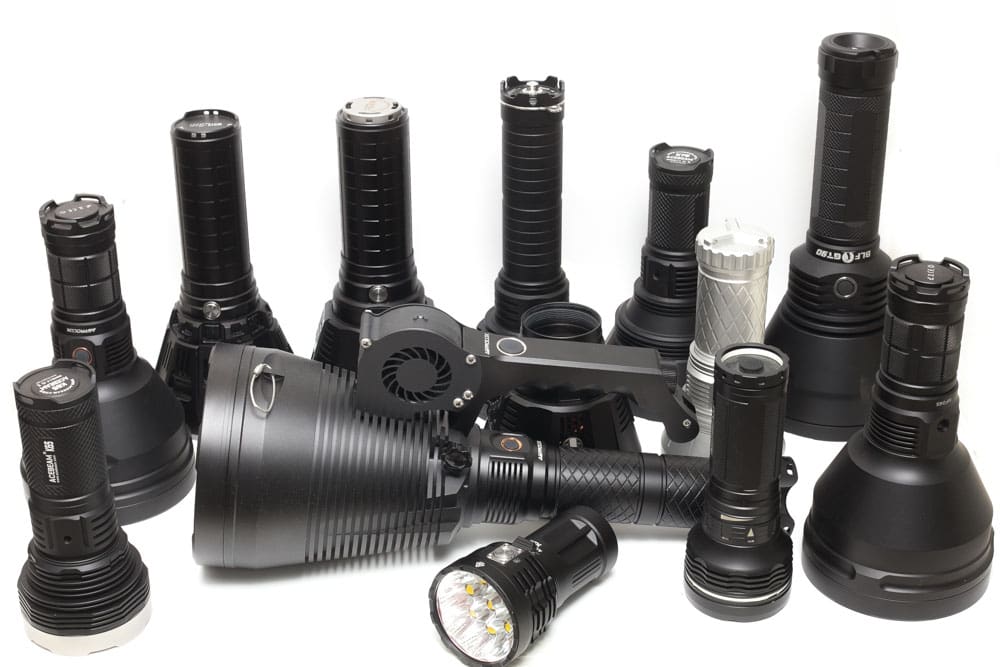
Driver & User Interface:
Acebeam uses its own user interface, which is very straightforward.. You can’t really make any mistake.
Available modes:
- Ultra Low, Low, Med1, Mid2, Mid3, High, Turbo
From OFF:
- Single-click: to last used mode, mode memory
- Double click: Turbo
- Triple-click: Strobe
- Press and hold: Ultra low
From ON:
- Single-click: flashlight turns off
- Double click: Turbo (and repeat the double-click to go back to the previously used mode)
- Triple-click: Strobe
- Press and hold: running through the modes from low to high, and starting from low again
Shortcuts:
- To Turbo: double click from off or on
- To Ultra Low: press and hold from off
- To Strobe: triple clicks from off or on
Mode memory:
- Yes
Blinky modes menu:
- Only strobe
Low battery warning:
- There’s an indicator light next to the switch.
- Green = 30+%
- Red solid= 10-30%
- Red blinking = below 10% (you better charge the battery at this point)
Lock-out mode:
- Mechanical switch lock
PWM:
- Not visible
Batteries & Charging
This is the gear I used for testing:
| Gear | Purpose | Link to buy |
|---|---|---|
| Hagner E4-X | Measuring beam intensity (throw) | Inquire at Hagner.se |
| Extech SLD400 | Lumens and logging runtimes | Amazon.com, Amazon.co.uk, |
| Leica Disto D2 | Distance for throw measurements | Amazon.com, Amazon.co.uk, |
| Asensetek Lighting Passport Pro Standard | Spectrometer for LED measurements | – |
| Uni-T UTi260B | Thermal image camera | Amazon.com, |
The X50 has a built in battery pack with a capacity of 4250mAh (at 10.8V) so that means they are 3 batteries in series to reach 10.8V.
For charging, Acebeam included a PD power adapter with USB-C port
After finishing the charge, the charge doesn’t accept.. probably the batteries are locked. After attaching a normal USB charger, the batteries probably unlock, and you can continue charging with the normal charger. I quickly measured the Voltage after the normal USB charger, and it was 9.26V. Divided by 3 = 2.78V per cell. That’s a bit on the low side.
Note: I don’t know if it’s just my copy, but after discharging the battery completely (and the light shuts off), the included battery charger doesn’t work. I have to use a normal 5V charger for a few seconds before I can use the included charger. Acebeam is going to send a new charger that hopefully solves this problem.
Charging works at 20V and about 1.5A.
Power bank feature:
The X50 battery pack can also be used as a power bank. Discharging can go up to 2A, but settles at a lower charge current depending on how full the battery is.
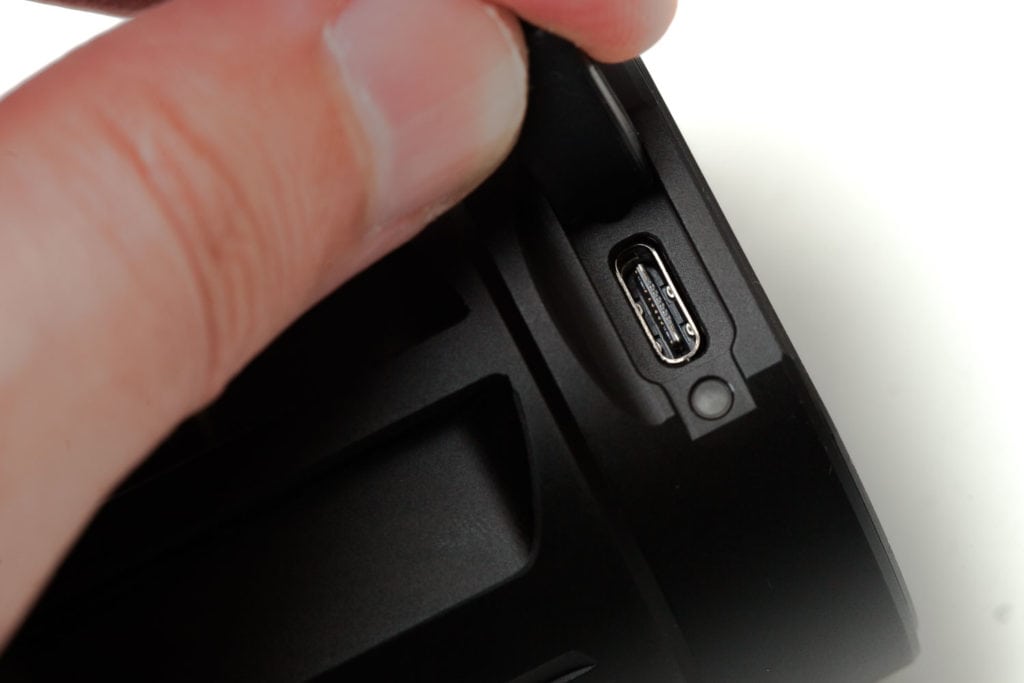
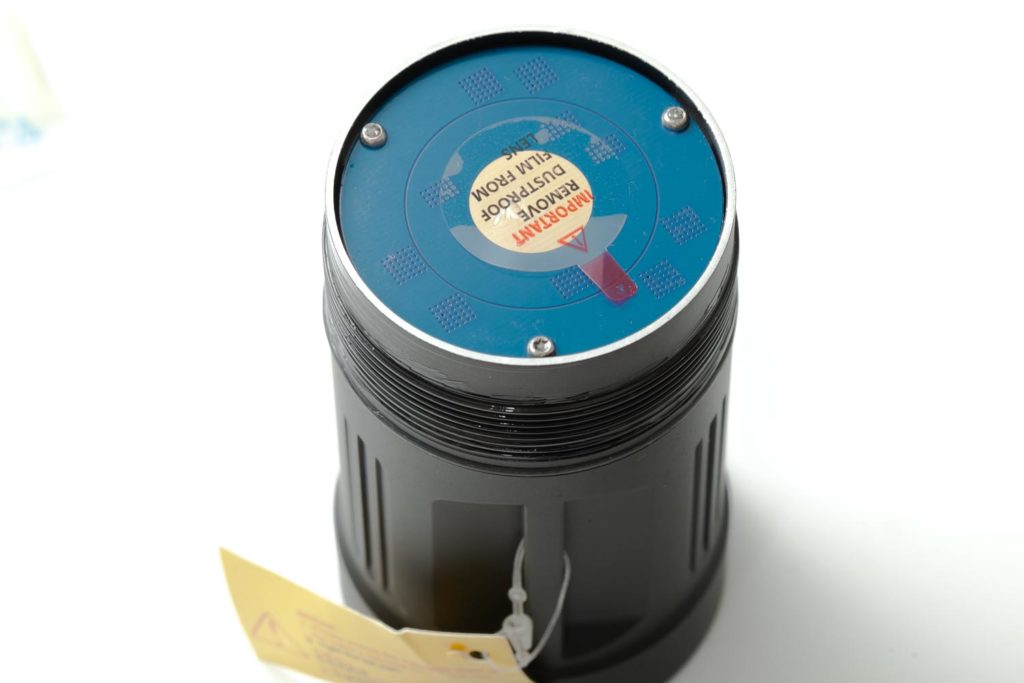
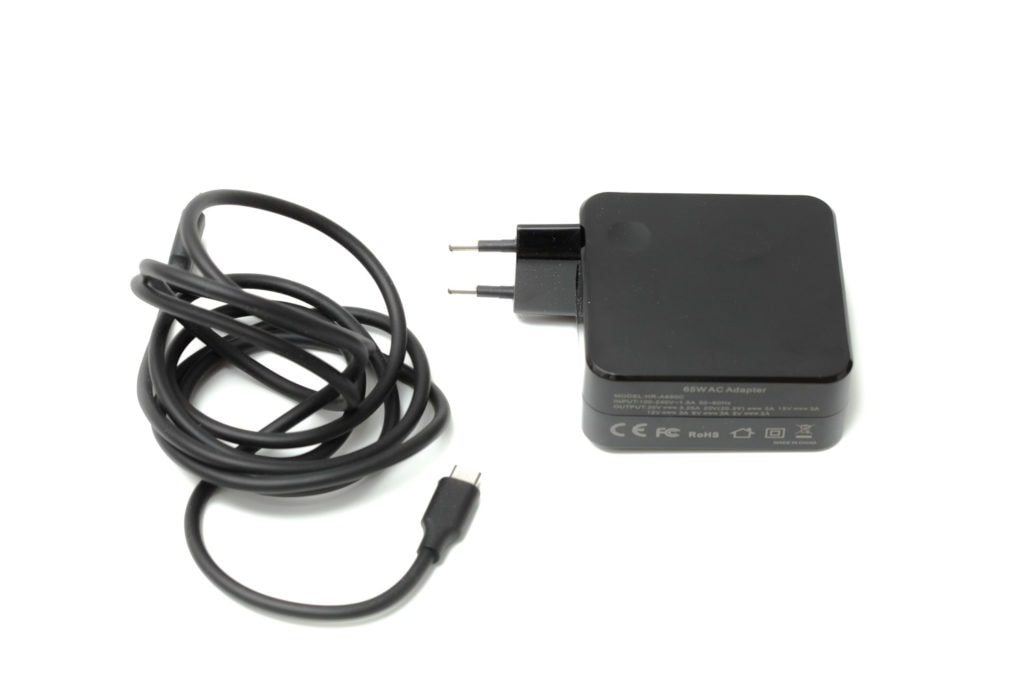
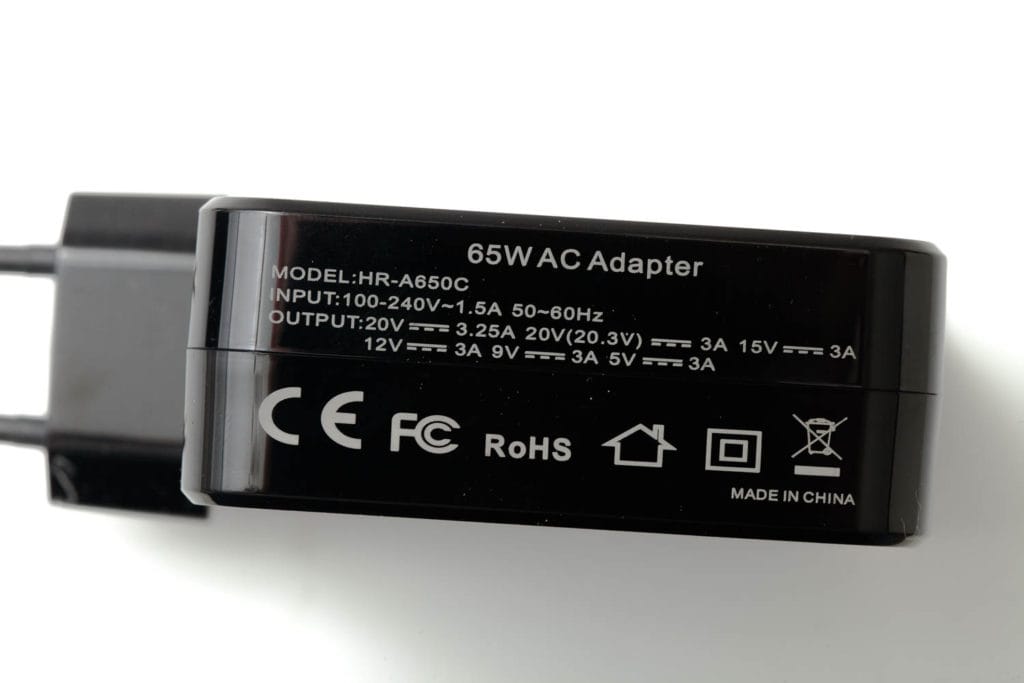
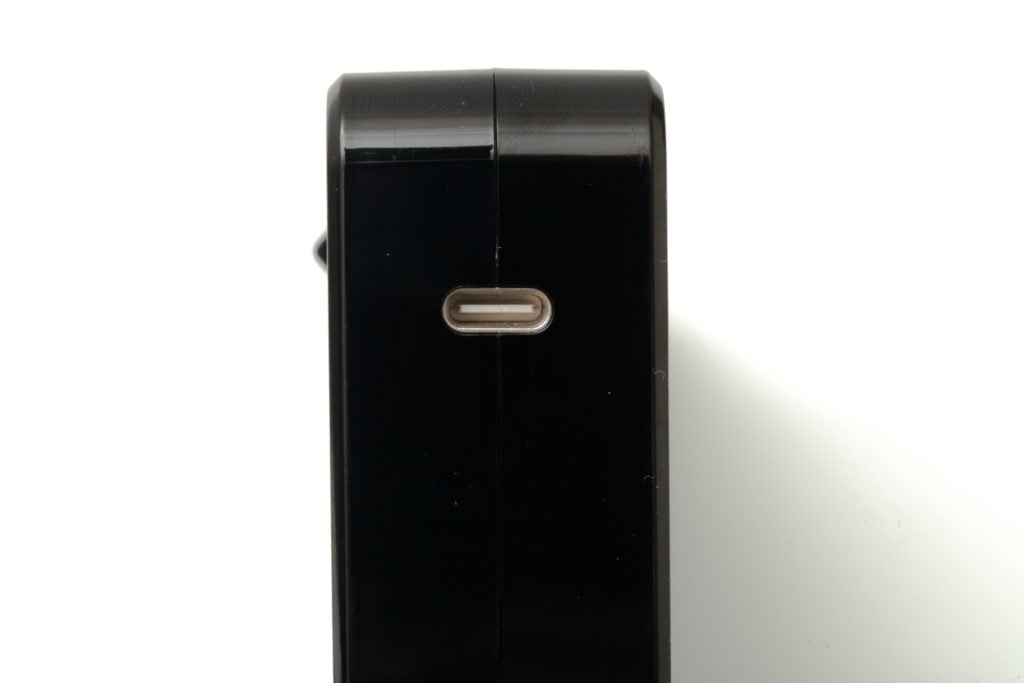
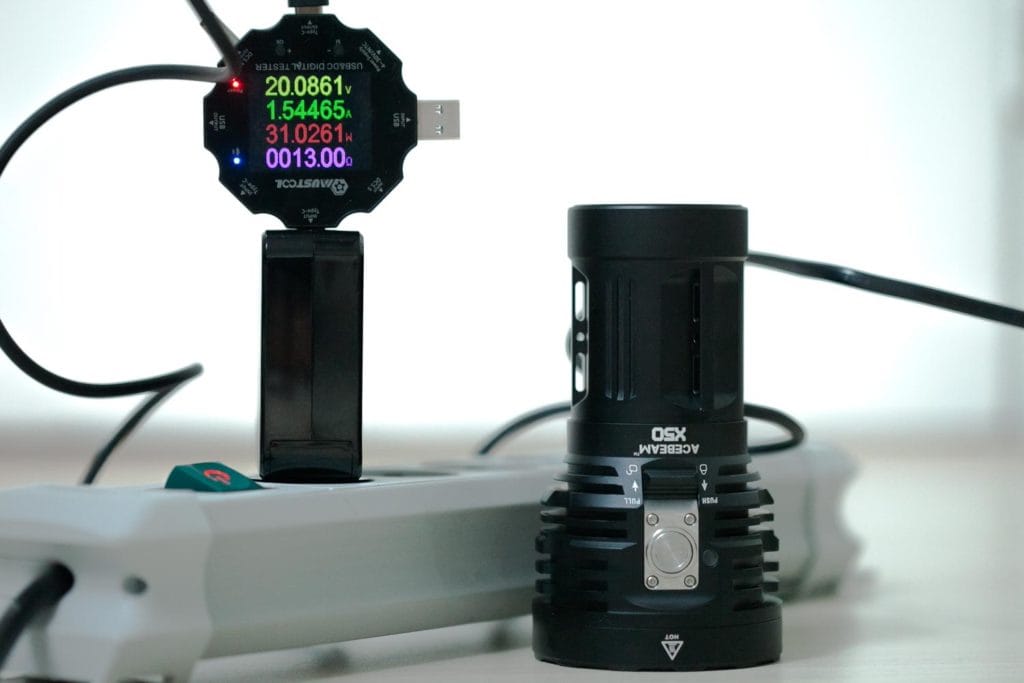

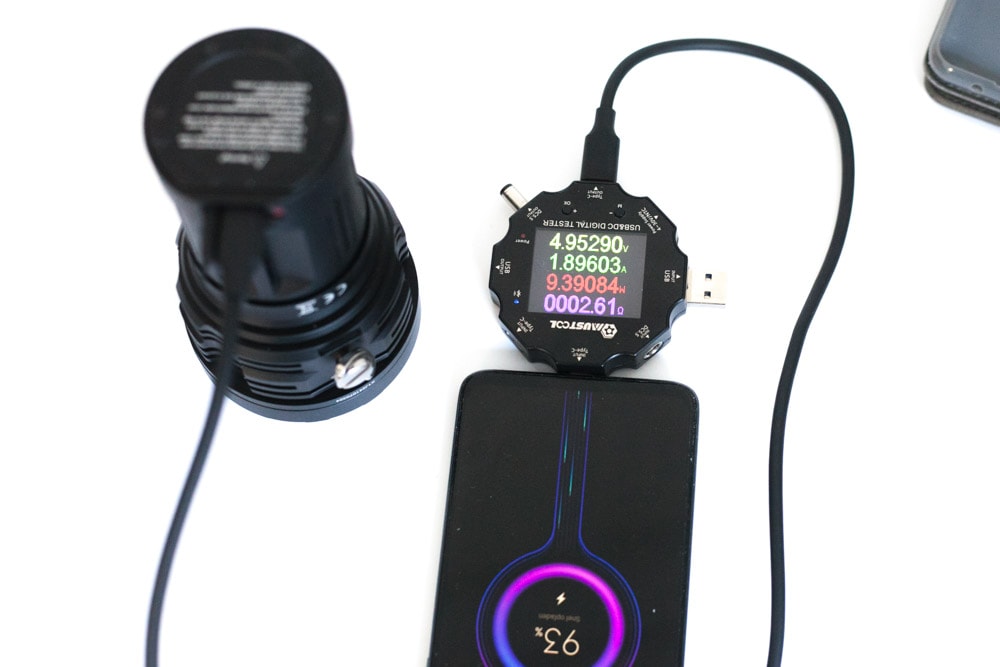
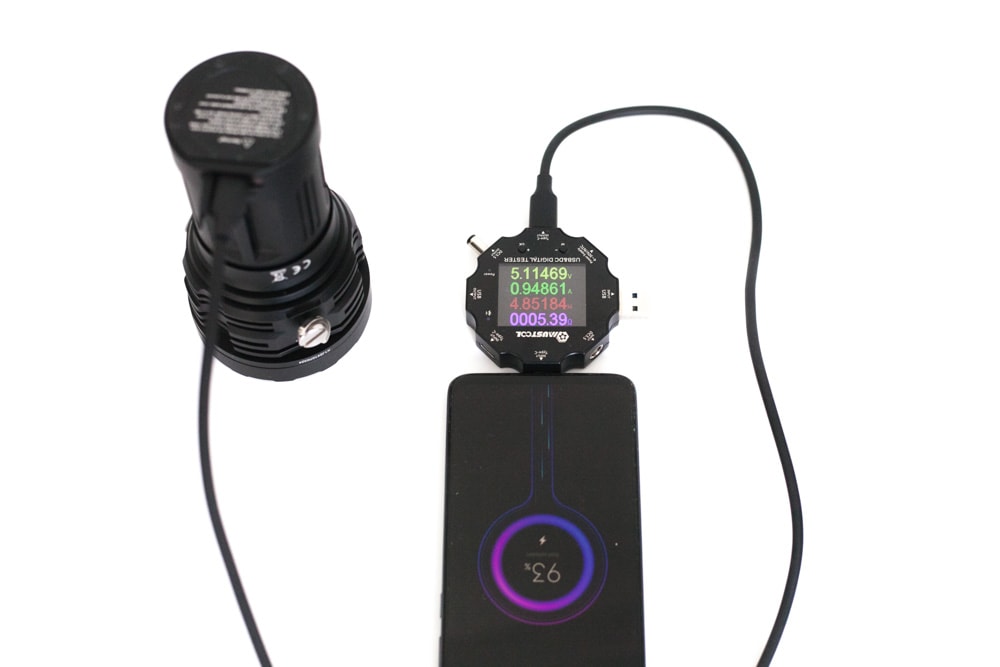
Performance
This is the gear I used for testing:
| Gear | Purpose | Link to buy |
|---|---|---|
| Hagner E4-X | Measuring beam intensity (throw) | Inquire at Hagner.se |
| Extech SDL400 | Lumens and logging runtimes | Amazon.com, Amazon.co.uk, |
| Leica Disto D2 | Distance for throw measurements | Amazon.com, Amazon.co.uk, |
| Uni-T UTi260B | Thermal camera | Amazon.com, |
Lumen measurements:
All output numbers are relative to my homemade Integrating Sphere. It is set up with an Extech SDL400 Lux Meter for measurements including a Kenko PRO1D ND-16 filter. The base measurement is done with a Convoy S2+ that has been tested at 255 lumens.
| Mode | Specs | 10 minutes | seconds | turn on |
|---|---|---|---|---|
| Ultra-Low | 200 | 202 | 201 | 201 |
| Low | 600 | 640 | 640 | 640 |
| Med1 | 2,150 | 2,077 | 2,098 | 2,104 |
| Med2 | 6,200 | 5,753 | 5,980 | 5,998 |
| Med3 | 13,500 | 3,963 | 13,142 | 13,323 |
| High | 24,000 | 3,906 | 22,908 | 23,571 |
| Turbo | 38,000 | 3,880 lm | 30,383 lm | 35,507 lm |
When sharing my results with Acebeam, they said it should be brighter than my measurements. I know my integrating sphere is not a professional multi-thousand dollar tool, so keep in mind the higher the numbers the less accurate it could get.
Runtime:
The runtime test was done with the 50cm integrating sphere, including the Kenko Pro1D ND-16 filter and Extech SDL400 data logging Lux Meter.
Click on the following graphs for higher resolution.

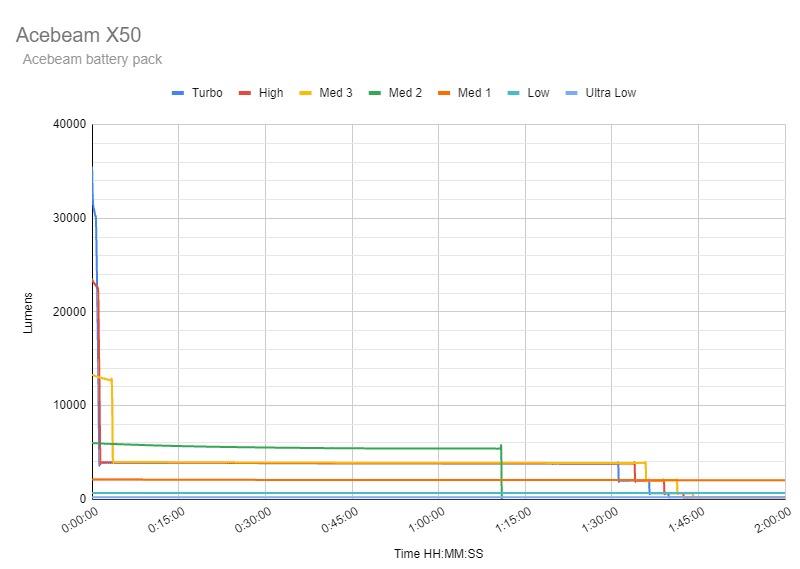
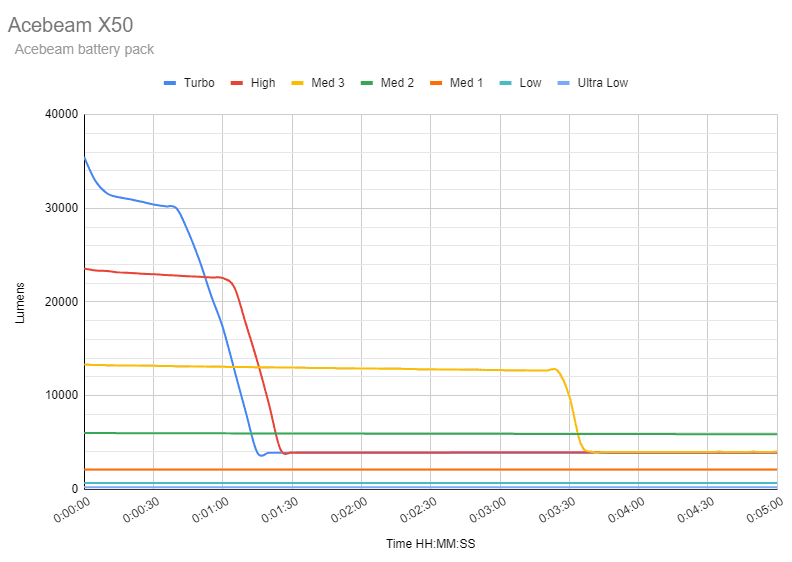
These runtime tests were done without cooling.
Turbo: drops pretty slowly from roughly 35,000 lumens to about 30,000 lumens in 40 seconds. The output start dropping quickly from that point to 3800+ lumens at 1 minute and 15 seconds. It quickly climbs up to 3900 lumens and maintains that output till 1 hour and 31 minutes. It then drops to almost 2000 lumens, and drops again at 1 hour and 36min to 610+ lumens. At the 1 hour and 40 minutes it drops to roughly 200 lumens. It turns off at 2 hours and 12 minutes.
Total runtime: 1 hour and 36 minutes? That’s less than 10% from the start
High: Starts at around 23000 lumens and at the 1 minute mark starts to drop rapidly, down to 3900 lumens.
At 1 hour and 34 minutes, it drops from 3900 lumens to 1970 lumens.
At 1 hour and 39 minutes, it drops to 615 lumens
At 1 hour and 42 minutes, it drops to 205 lumens
At 2 hours and 12 minutes, it turns off.
Total runtime: 1 hour and 42 minutes (but you can use it till 2 hours and 12 minutes)
Mid3: Starts at around 13,000 lumens.
At 3 minutes and 30 seconds, it drops from 12650 lumens 3970 lumens.
At 1 hour and 35 minutes, it drops from 3850 lumens down to 2000 lumens
At 1 hour and 41 minutes, it drops from 2010 lumens down to 625 lumens
At 1 hour and 44 minutes, it drops from 25 to 210 lumens
At 2 hours and 10 minutes, the flashlight turns off.
Runtime: 2 hours and 10 minutes
Mid2: Starts at around 6000 lumens
At 1 hour and 10 minutes it turns off, the last recorded output was 5400 lumens. I probably have to redo this test because it looks so strange. Edit: I finished testing this mode the 2nd time, and it looks the same, except for a minute or 2 shorter runtime.
Mid1: Start at around 2100 lumens and slowly decreases output
At 3 hours and 26 minutes, it drops from 2015 lumens down to 620 lumens
At 3 hours and 29 minutes, it drops down to roughly 203 lumens
At 3 hours and 48 minutes, the light turns off.
Runtime: 3 hours and 48 minutes.
Low: Starts at around 640 lumens
At 10 hours and 19 minutes, it drops from 640 lumens down to 203 lumens
At 10 hours and 43 minutes, it turns off.
Runtime: 10 hours and 43 minutes.
Ultra-low: Starts at around 200 lumens, and slowly increases to about 202 lumens
At 23 hours and 33 minutes, the light turns off.
Runtime: 23 hours and 33 minutes.
Since my measurements weren’t up to the specs, Acebeam asked me to do the test again, but then with cooling. I put a fan in front of the flashlight to keep the temperature down. The following graph shows the runtime test in Turbo cooled vs not cooled.
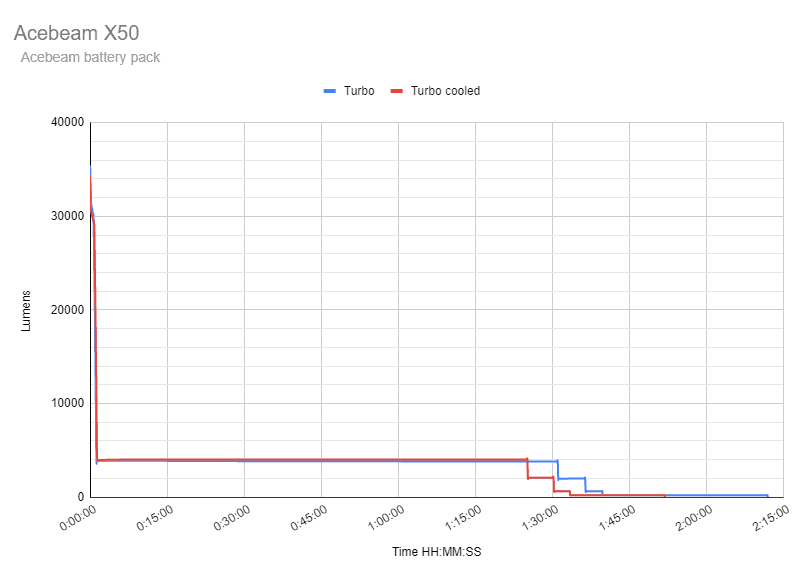
Cooled, the output was just a few lumens higher, but th runtime was shorter. The start and drop were close to identical
I then also tested to see if Turbo could be reactivated after the light dropped down. Warning: Don’t do this too often, because the light gets burning hot!
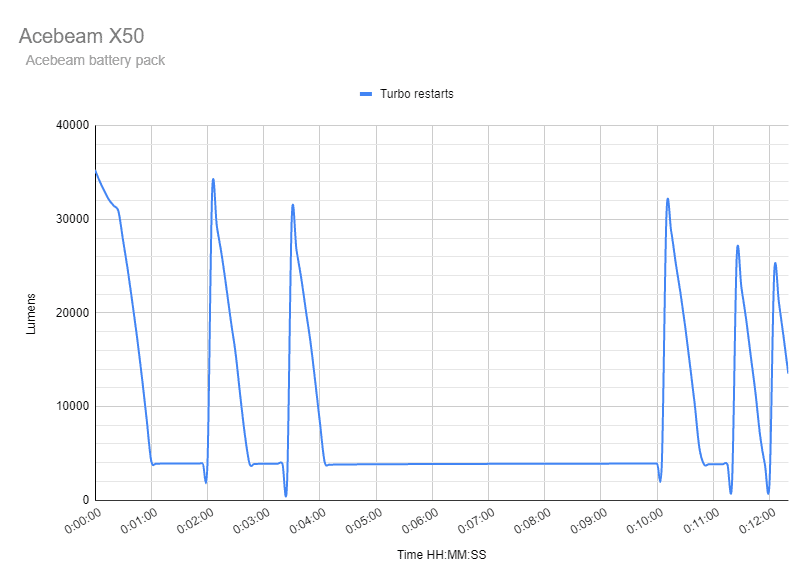
I started recording the temperature after the second or third re-activation of Turbo. It dropped slowly to about 65+ degrees, and each time Turbo was reactivated the temperature started creeping up. I wouldn’t suggest you doing this. It gets extremely hot.
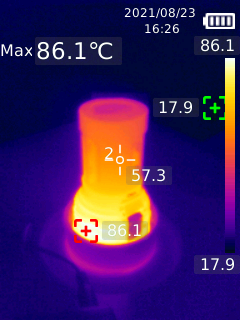
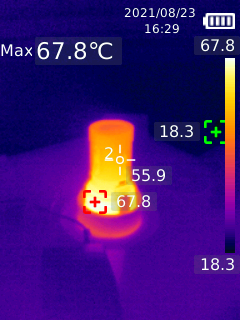
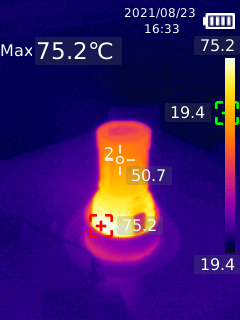
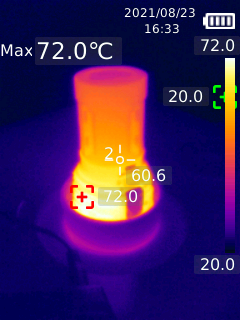
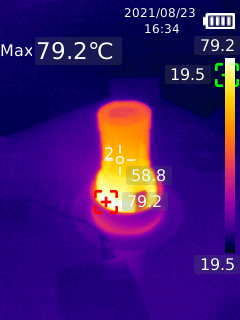
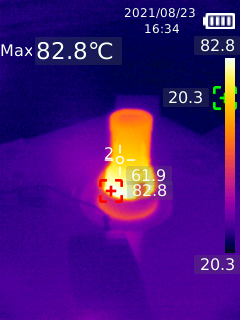
Throw Measurement
Measurements were taken indoors at a little over 5 meters with a professional Hagner E4-X Lux Meter. Measurements were taken 30 seconds after activation unless stated otherwise.
| Mode | Specs | measured candela | in meters | in yards |
|---|---|---|---|---|
| Turbo @ start | 140,625 cd | 92,267 cd | 608 | 664 |
| Turbo | 140,625 cd | 83,587 cd | 578 | 632 |
| High | 90,000 | 57,868 cd | 481 | 526 |
| Mid3 | 52,900 | 32,792 cd | 362 | 396 |
| Mid2 | 27,225 | 15,753 cd | 251 | 275 |
| Mid1 | 13,225 | 5,144 cd | 143 | 157 |
| Low | 3,025 | 1,286 cd | 72 | 78 |
| Ultra-Low | – | 321 cd | 36 | 39 |
Unfortunately, my numbers don’t match up with the specifications at all. I redid the measurement at 10 meters and didn’t reach the numbers I got from the 5-meter measurement. I also re-measured it a few days after the review was finished, but now at 20 meters, and the numbers are even lower, and between 73,000-74,000 cd.
Acebeam X50 vs Imalent MS08 etc.
Compared to other Soup Can lights
High power flashlight comparison
Here is the list with most of the high-power flashlights we reviewed in this category (Category: high-power soupcan sized flashlights).
| Flashlight | Max. Output | after 30sec |
|---|---|---|
| Acebeam X50 | 35,507 | 30,383 |
| Acebeam X75 | 64,295 | 73,716 |
| Acebeam X80-GT2 | 31,890 | 27,143 |
| Astrolux EC06 | 18,111 | 8,352 |
| Fenix LR50R | 11,698 | 10,849 |
| Imalent MR90 | 52,326 | 32,128 |
| Imalent MS08 | 25,745 | 19,615 |
| Imalent MS12 Mini | 68,773 | 46,750 |
| Imalent MS12 Mini C | 71,967 | 55,873 |
| Imalent RS50 | 20,302 | 16,939 |
| Imalent SR16 | 53,657 | 43,115 |
| Lumintop GT3 | 16,267 | 15,168 |
| Manker MK38 (SFT) | 16,013 | 13,129 |
| Olight Marauder 2 | 14,251 | 13,964 |
| Thrunite TN50 | 18,200 | 17,360 |
(Interactive line graphs below)
Hover your mouse over the lines in the graph to see more details, or select a flashlight in the graph.
Using a mobile phone? Hold your phone horizontally!
Another comparison, focusing on the first 10 minutes after activation
And here’s another comparison, but zoomed in. The first 60 minutes after activation.
Beamshots
For the following beamshots I used a Canon EOS 5D Mk2 and a 50mm lens. manual settings: ISO1600, 1/4sec , F4, 5000K
The shed is about 65 meters / 71 yards away.
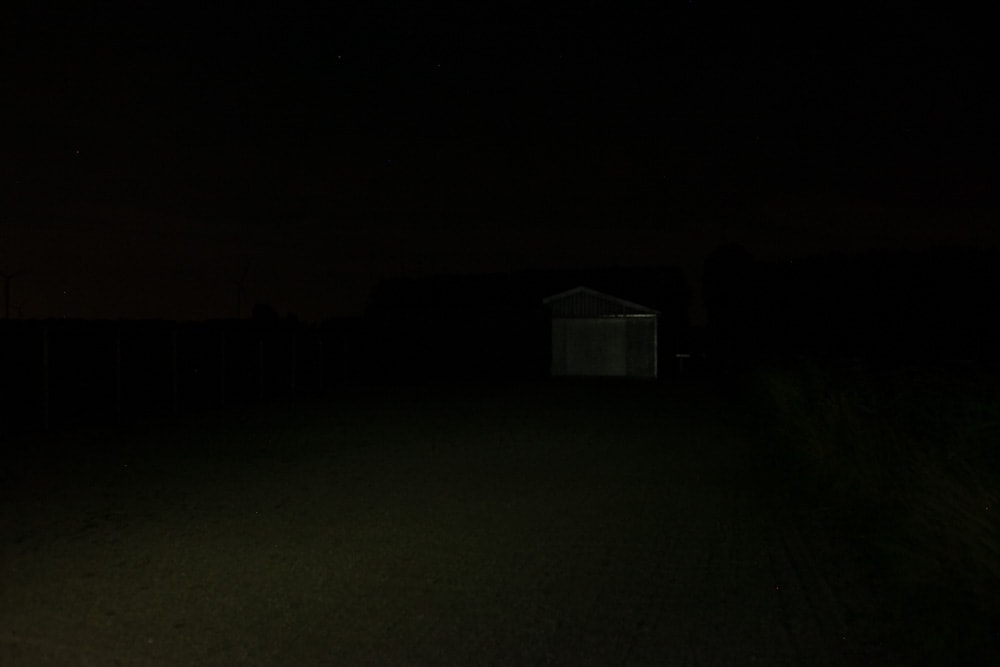
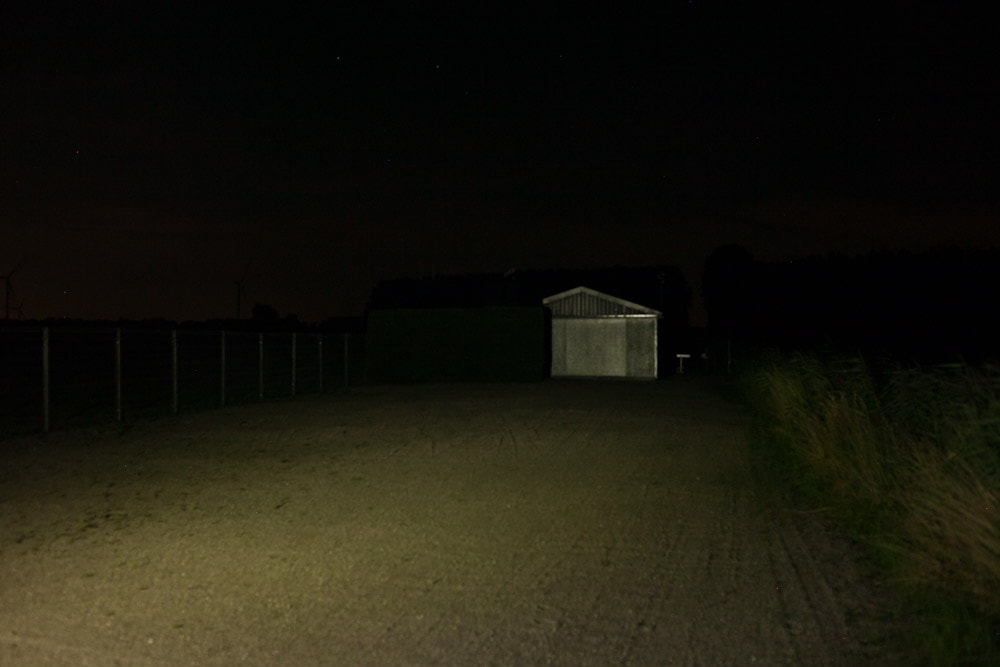
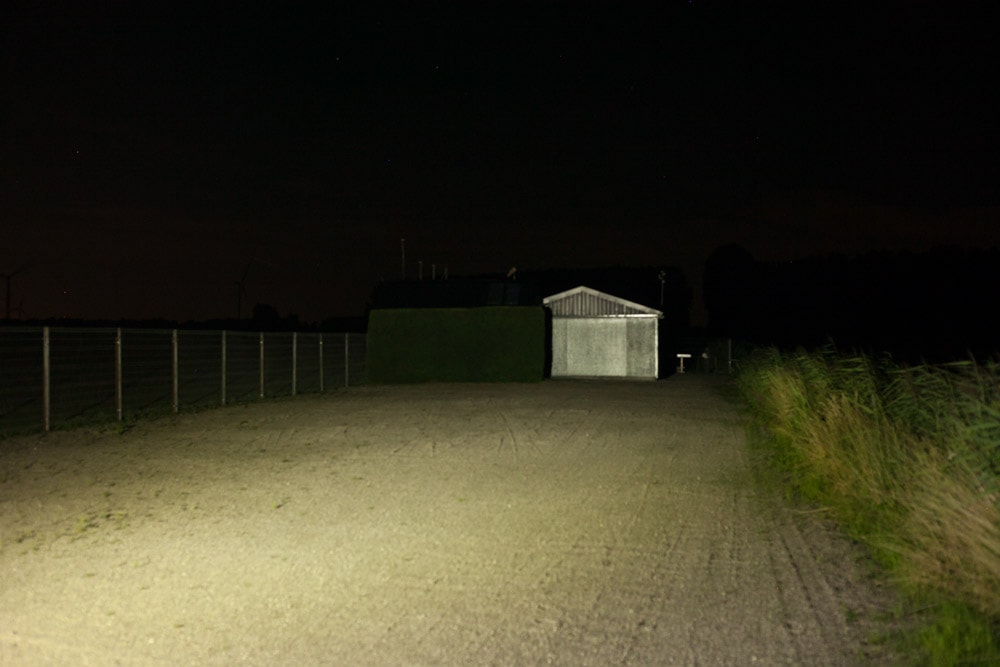
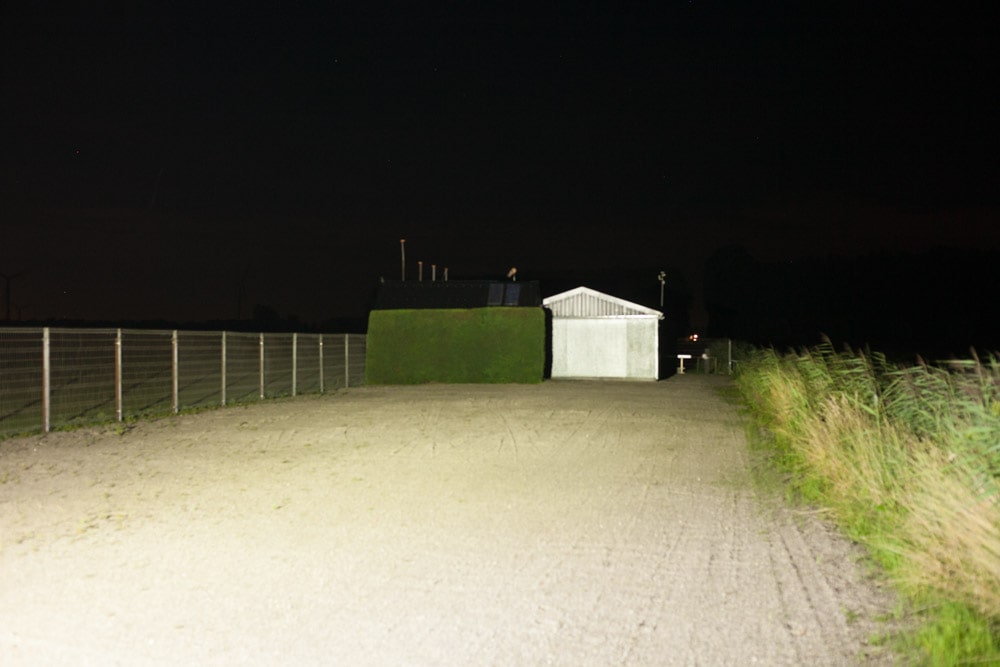
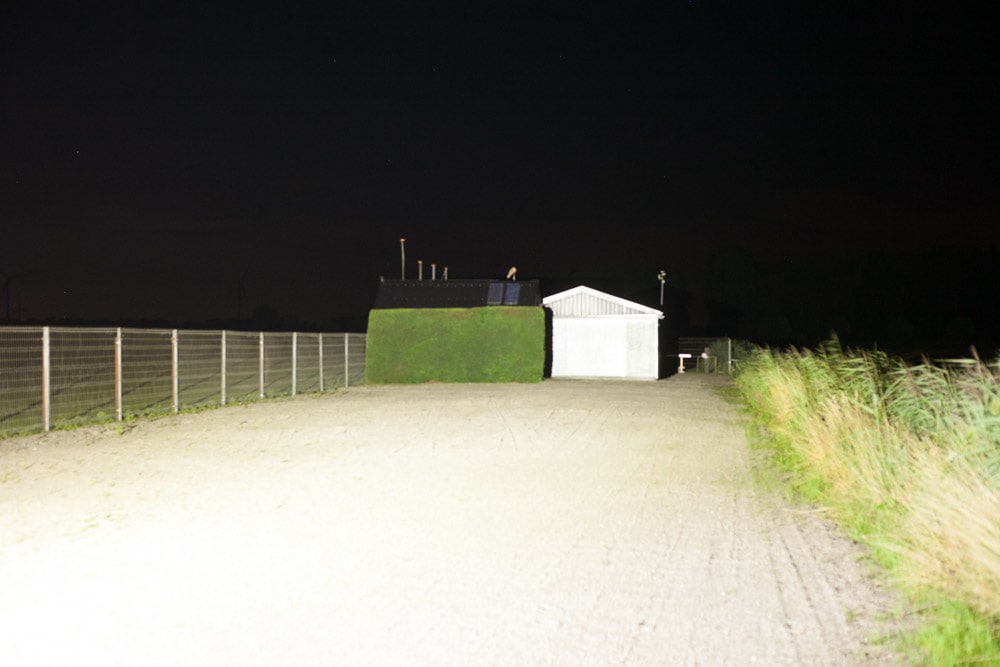
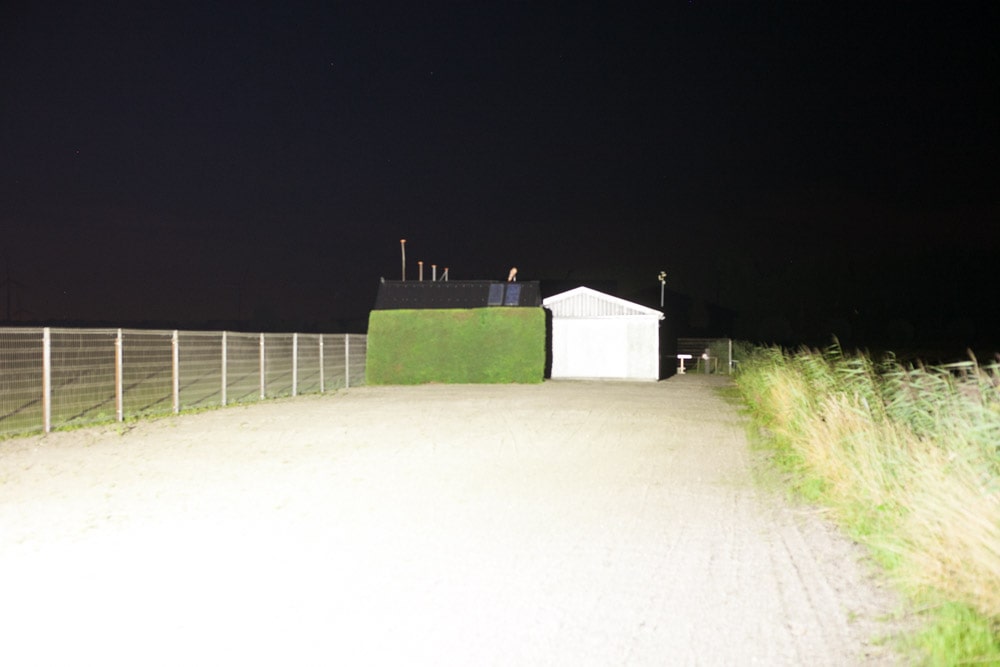
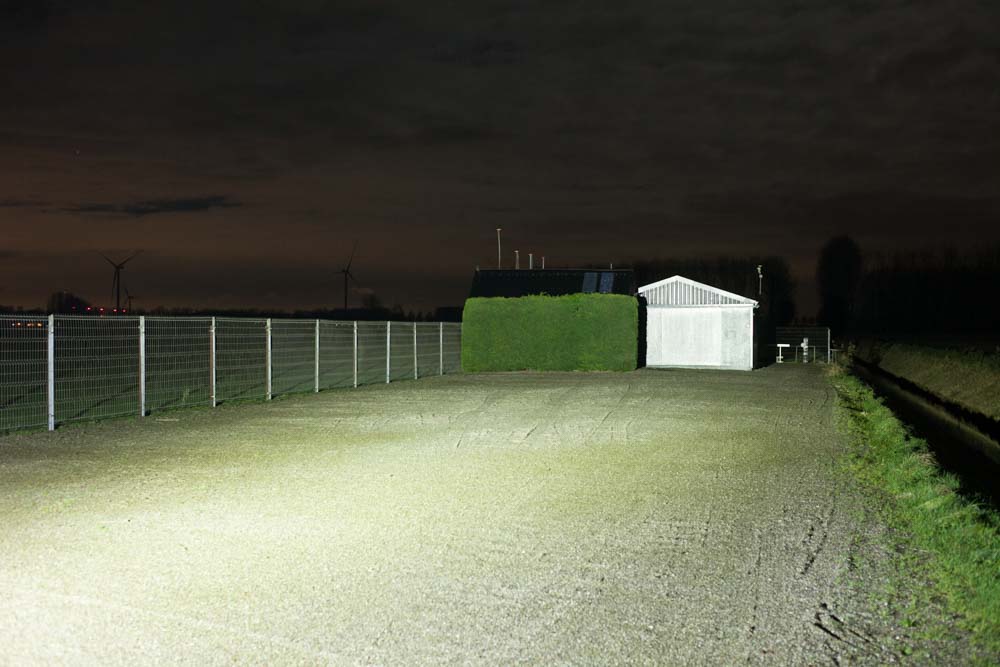
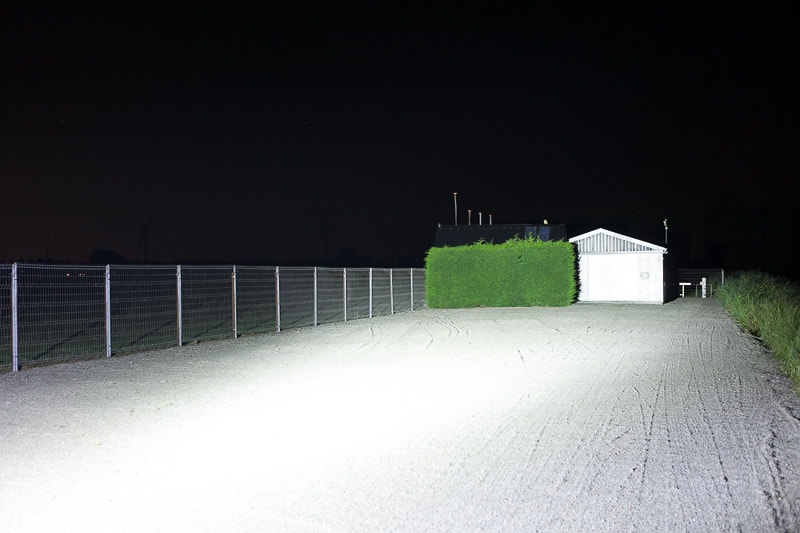
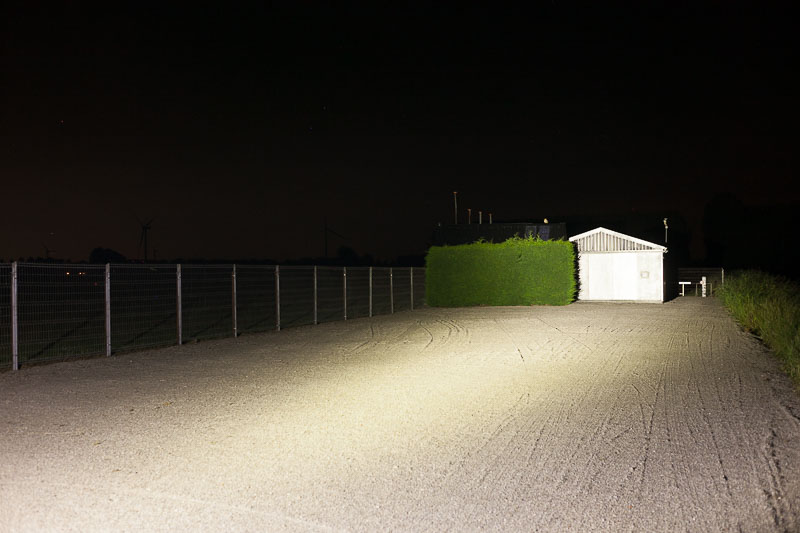

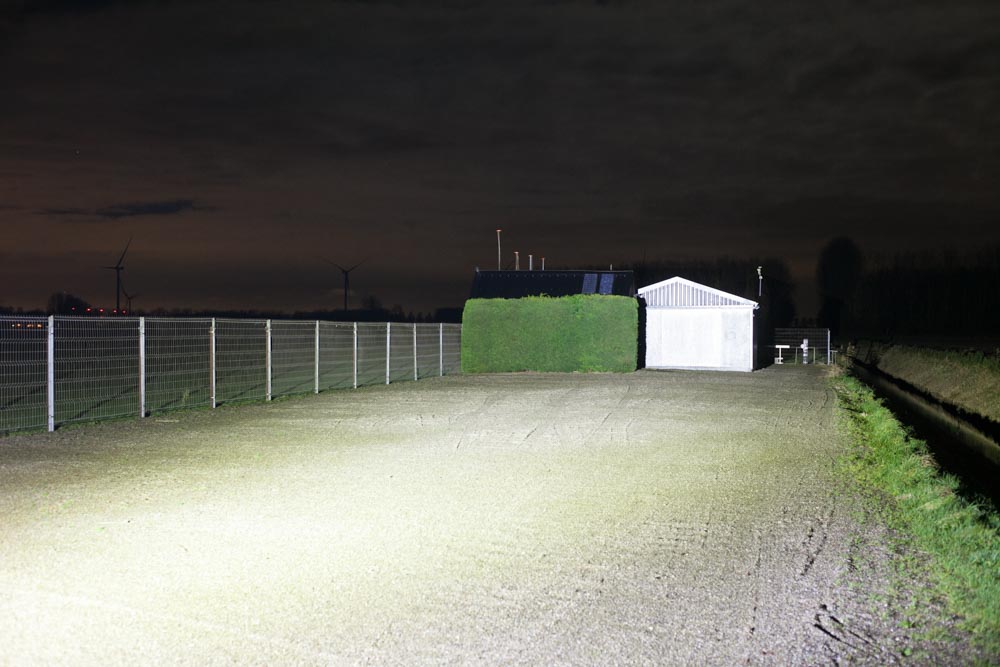
Disclaimer: I bought this flashlight with a reviewer’s discount. Nobody paid me to review this flashlight, nor have I been holding back on problems or defects.
Final Verdict
Pros
- Extremely bright!
- Small size
- Comes with handle, lanyard, and holster
- Mechanical lockout protecting from accindental activation
- Power bank feature
- Fast charging
- Very floody
Cons
- Gets very, very hot without cooling (you better use the handle) but that is quite normal for such a high power flashlight
- Charger doesn’t work when the light turns off by itself (protection probably tripped)
- Doesn’t throw as far as advertised
Explanation on star ratings:
1: Avoid: my phone flashlight would be a better choice – 2: Poor: significant defect or issues, much better options available at the same price – 3: Average: some defects or issues – 4: Good: recommended (minor issues) – 5: Great: highly recommended

4.0 stars: ★★★★
The Acebeam X50 is the brightest mass production light of 2021. Although my copy couldn’t reach 38,000 lumens, 30,000 lumens after 30 seconds is still insanely bright. However, there’s a little problem with my unit not charging when the battery protection has tripped.
With an easy-to-understand UI and a Turbo mode that can be repeatedly activated, this is a pretty insane flashlight! Keep in mind that you need quite a bit of airflow to keep the temperature down, and you better use the carry handle. Definitely worth the 4 stars.
Acebeam X50 discount
Get a whopping 15% off your next order at Acebeam.com with the following discount coupon: AE15. Simply add the coupon code at your checkout.
1lumen selects and reviews products personally. We may earn affiliate commissions through our links, which help support our testing.